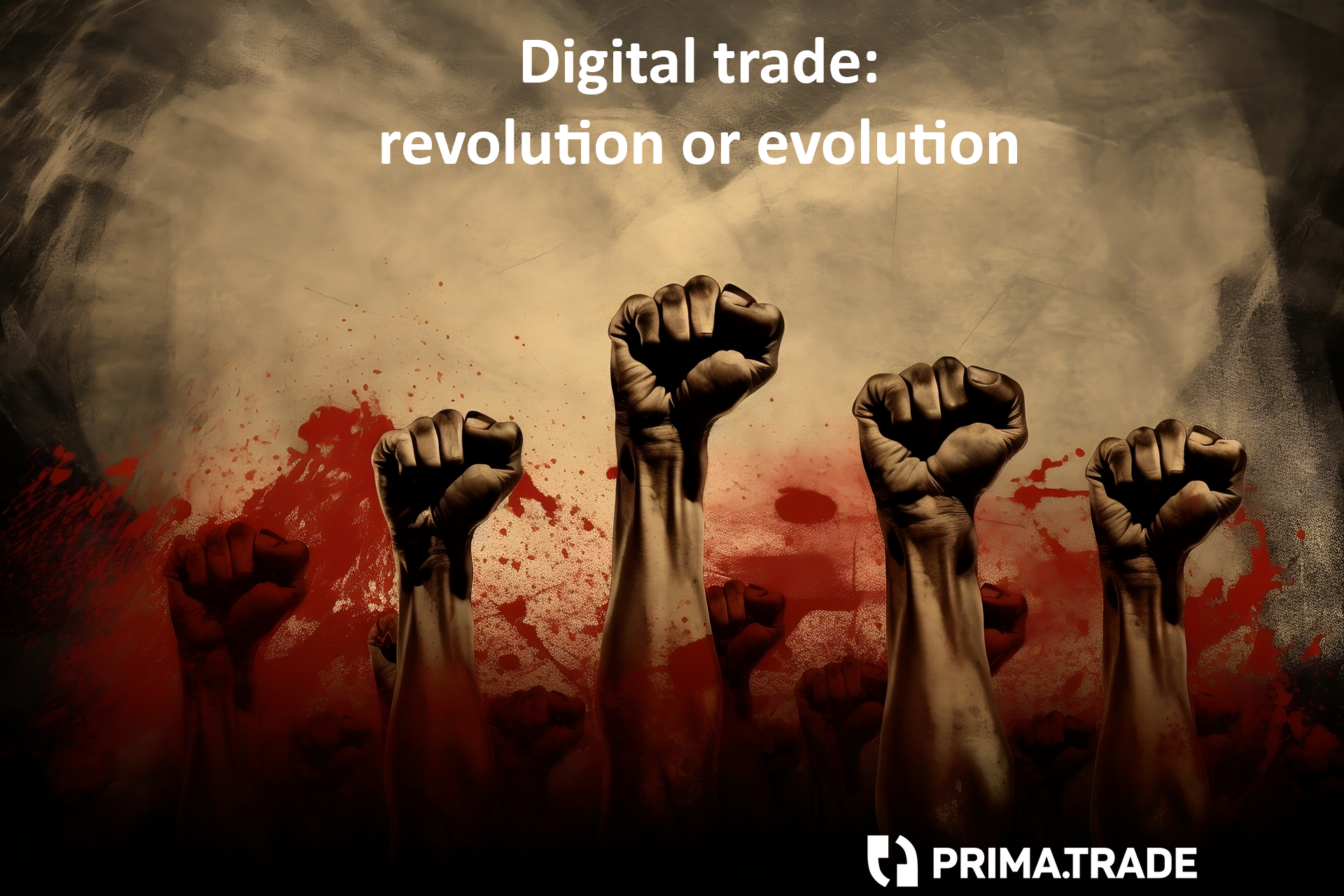Evolving digital trade

Digital trade: evolution is the way to go
Change usually happens faster than you think but slower than you experience.
Cross-border trade involves payments, credit and international contracts – most organisations and the people in them want to go at a very measured pace. That’s especially true for banks.
The path to digitisation of trade will feel like it has happened slowly although when we look back, we might find it happened faster than we thought.
But most importantly, it will be experienced as an evolution and not a revolution.
We can all be on board with “evolving digital trade” - there is no need to take big leaps into the unknown.
What are we trying to achieve?
In this article, we use the term “digitisation” as a vernacular term to mean all of digitalisation, digitization and digitalization – just to make sure we are all on the same page.
And so, first of all, what is it that we need to digitise? The answer here depends on what we want to achieve. Commonly-stated goals are:
Get rid of paperwork.
Ensure smooth passage of cargo across borders.
Reduce the risk of fraud.
Enable quicker payments.
Increase access for SMEs to finance.
Moreover, there is a big difference between:
what’s needed for trade in bulk commodities (like grain, oil, coal etc) versus
what’s needed for trade in containerised goods (like consumer electronics, garments, household items, etc).
If our only goal is to reduce the risk of fraud and cost of finance for sea-borne, bulk commodities, then we can probably restrict our discussion to the electronic bill of lading and perhaps the electronic promissory note and bill of exchange. See here for discussion on the Electronic Trade Documents Act 2023, a new English law that enables these instruments.
But this is only a small part of global trade.
The ETDA does not really help with all these objectives.
Trade in containerised goods and services, especially involving SMEs, is not materially helped by the changes in English law that have come through in 2023.
These developments do not enable exporters to get paid more quickly, to reduce their costs, to increase their access to finance or materially reduce their paperwork.
What do we need to digitise?
Digitising trade means considering the realities of cross-border trade today – and implementing technology that makes today’s realities more workable, especially for SME exporters.
There is a large amount of paperwork needed by buyers in order to be confident that they are getting what they ordered; the list is increasing all the time because of ESG:
Transport documents
Packing lists
Invoices
Confirmation of purchase order match
Inspection reports
Bills of materials
Proofs of sourcing (eg: from deeper tiers of suppliers)
Scope 3 paperwork around emissions and carbon footprint
Etc.

Paper paper everywhere ...
Most global trade is trade in containerised goods. Buyers (importers) increasingly need to know a lot about what they are buying.
That’s for their own reporting (eg: for “scope 3”), for compliance (eg: to avoid WROs) and to enable products to be on-sold and properly described (eg: to support consumer-facing claims about sustainability or the environmental qualities of goods).
For digitisation to be effective, we need to digitise all of the above.
Evolving digital trade - what's needed?
Here’s the point. It is not about smart contracts, electronic bills of lading, blockchain or making new laws. It can be kept quite simple and made to work under existing legal arrangements.
Buyers and suppliers need a platform that connects them together and enables:
Buyers to ask for the documents that they want – however many there may be.
Suppliers to locate the documents requested and, given that they come from many different sources, to digitise them as they are provided.
Automated checks to be applied to make sure that what’s been provided matches what’s been requested,
Quick and automated approvals to pay from the buyer - and, if finance can be coordinated - leading to immediate payments to suppliers.
We could call it "cash against data" - matching the letter of credit concept of "cash against documents".
There is no blockchain and no smart contracts, but this is a practical way to meet the goals of trade digitisation, especially for SME exporters.
Evolution is usually easier to manage than revolution.
Evolving digital trade is the answer. And we can base that journey on platforms that digitise what we do today without needing any big leaps or significant changes in how we all work.
To find out more about how PrimaTrade delivers digital trade – please click here.